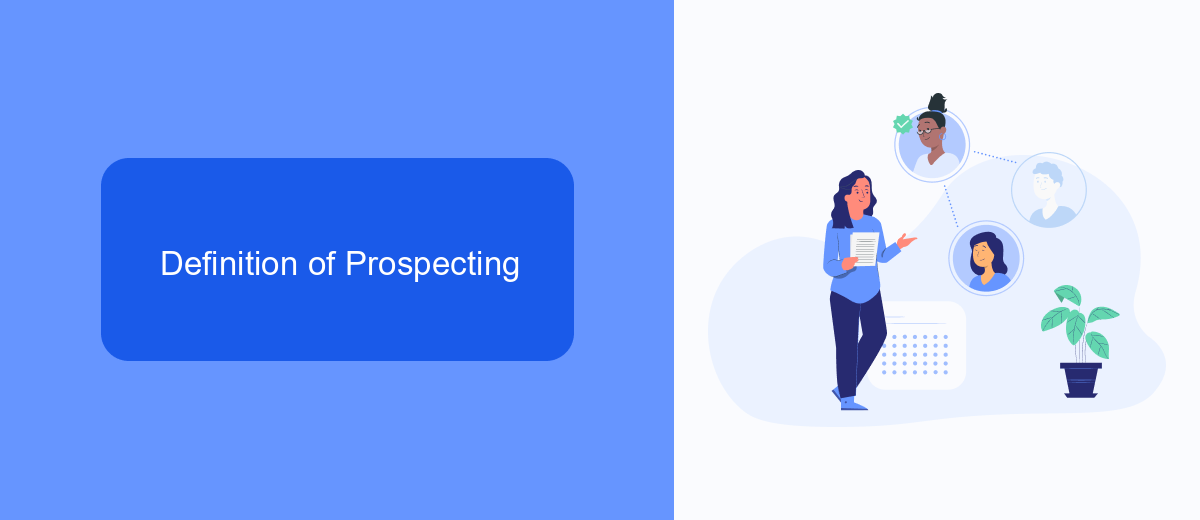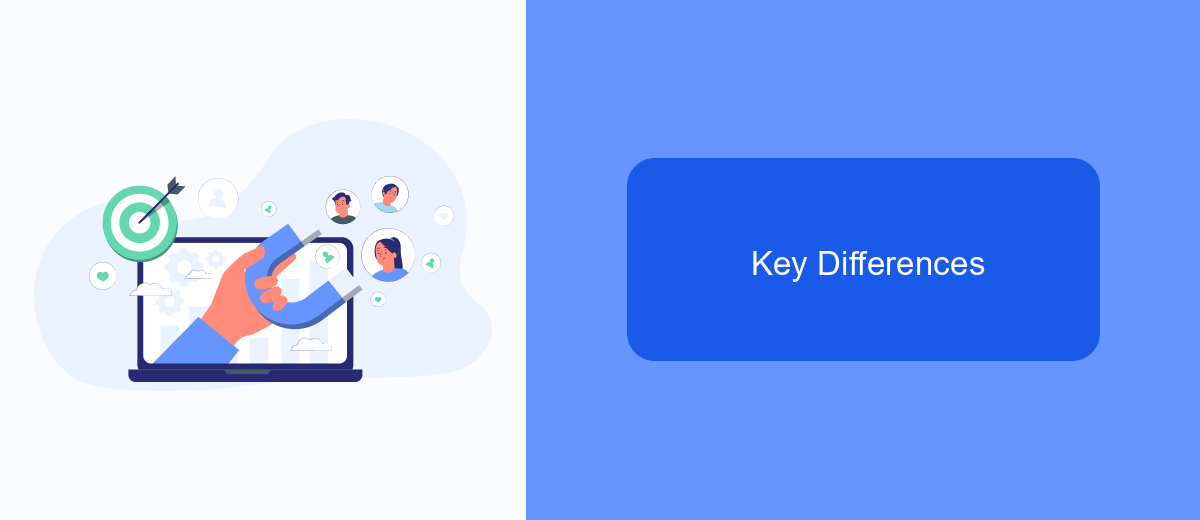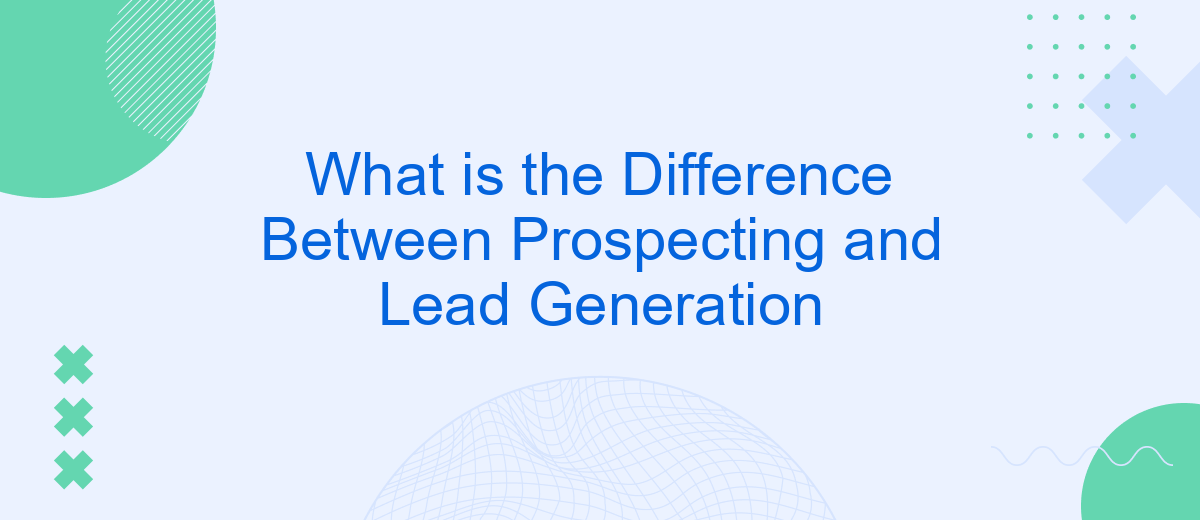In the world of sales and marketing, understanding the nuances between prospecting and lead generation is crucial for success. While both processes aim to identify potential customers, they employ different strategies and techniques. This article delves into the distinctions between prospecting and lead generation, helping businesses streamline their efforts and enhance their customer acquisition strategies.
Prospecting vs. Lead Generation
Prospecting and lead generation are often used interchangeably, but they serve distinct functions in the sales process. Prospecting involves actively searching for potential customers who might have an interest in your product or service. This process is usually manual and includes activities like cold calling, networking, and researching potential clients.
- Prospecting: Manual search for potential customers.
- Lead Generation: Automated or semi-automated process to attract potential customers.
- Tools: Prospecting often uses CRM systems, while lead generation can benefit from tools like SaveMyLeads for automated integration and data collection.
Lead generation, on the other hand, focuses on attracting potential customers through various marketing strategies such as content marketing, social media campaigns, and email marketing. It often involves automated systems to capture and nurture leads. Tools like SaveMyLeads can streamline this process by integrating different marketing platforms and automating data collection, making it easier to manage and convert leads.
Definition of Prospecting

Prospecting is the process of identifying and engaging potential customers for a business's products or services. It involves researching and gathering information about individuals or organizations that might have an interest in what the business offers. The primary goal of prospecting is to create a pool of potential clients who can be nurtured and eventually converted into paying customers. This process often includes various techniques such as cold calling, email outreach, networking, and social media engagement to establish initial contact and gauge interest.
Effective prospecting requires a strategic approach and the use of various tools and technologies to streamline the process. One such tool is SaveMyLeads, which helps businesses automate the integration of lead data from different sources into their CRM systems. By leveraging services like SaveMyLeads, companies can ensure that their prospecting efforts are efficient and that no potential leads are overlooked. This automation not only saves time but also enhances the accuracy and effectiveness of the prospecting process, allowing sales teams to focus on building relationships and closing deals.
Definition of Lead Generation

Lead generation is a crucial aspect of any business strategy, aimed at attracting and converting prospects into potential customers. It involves various marketing tactics and techniques to capture the interest of individuals who are likely to purchase a company's products or services. The ultimate goal of lead generation is to create a pipeline of qualified leads that can be nurtured and eventually converted into sales.
- Identify target audience: Determine who your ideal customers are based on demographics, behavior, and preferences.
- Create valuable content: Develop engaging and informative content that addresses the needs and pain points of your target audience.
- Utilize multiple channels: Leverage various marketing channels such as social media, email marketing, and SEO to reach a wider audience.
- Capture leads: Use lead capture forms, landing pages, and call-to-actions to collect contact information from interested prospects.
- Nurture leads: Implement lead nurturing strategies to build relationships and guide prospects through the sales funnel.
Effective lead generation often involves the integration of various tools and services to streamline the process. For instance, SaveMyLeads offers a platform that automates lead data transfer between different applications, ensuring that your sales and marketing teams have immediate access to new leads. This automation not only saves time but also enhances the accuracy and efficiency of your lead generation efforts.
Key Differences

Prospecting and lead generation are two essential components of a successful sales strategy, yet they serve distinct purposes. Understanding these differences can help businesses optimize their sales processes and improve overall efficiency.
Prospecting involves identifying potential customers who may be interested in your product or service. This process is more manual and requires a personal touch, as it often involves direct outreach and relationship building. Lead generation, on the other hand, focuses on attracting and capturing interest from a broader audience, often through digital marketing efforts.
- Prospecting: Manual, personalized outreach to potential customers.
- Lead Generation: Automated, broad-reaching efforts to capture interest.
- Tools: Prospecting often uses CRM systems, while lead generation may employ services like SaveMyLeads for automated integrations.
- Goal: Prospecting aims to build relationships, whereas lead generation seeks to gather contact information and initial interest.
By recognizing the key differences between prospecting and lead generation, businesses can better allocate resources and employ the right strategies for each stage of their sales funnel. Utilizing tools like SaveMyLeads can further streamline these processes, enhancing overall productivity and effectiveness.


Conclusion
In conclusion, understanding the difference between prospecting and lead generation is crucial for any business aiming to optimize its sales funnel. While prospecting is a more targeted approach that involves actively searching for potential customers, lead generation focuses on attracting and capturing interest through various marketing strategies. Both methods are essential and should be integrated to create a robust and effective sales strategy.
Utilizing tools and services like SaveMyLeads can significantly streamline these processes by automating lead generation and ensuring seamless integration of data across various platforms. This not only saves time but also enhances the accuracy and efficiency of your sales efforts. By leveraging such technologies, businesses can focus more on nurturing relationships and closing deals, ultimately driving growth and success.
FAQ
What is the primary difference between prospecting and lead generation?
Which is more effective: prospecting or lead generation?
Can both prospecting and lead generation be automated?
Do I need different teams for prospecting and lead generation?
How do I measure the success of prospecting and lead generation efforts?
Would you like your employees to receive real-time data on new Facebook leads, and automatically send a welcome email or SMS to users who have responded to your social media ad? All this and more can be implemented using the SaveMyLeads system. Connect the necessary services to your Facebook advertising account and automate data transfer and routine work. Let your employees focus on what really matters, rather than wasting time manually transferring data or sending out template emails.
